Martographers
Mars' leader in Global Positioning
"If you're on Mars, we'll find you!"
Communications
Satellite to Mars
Frequency Domain:
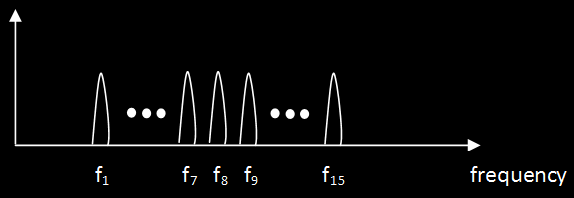
Time Domain:
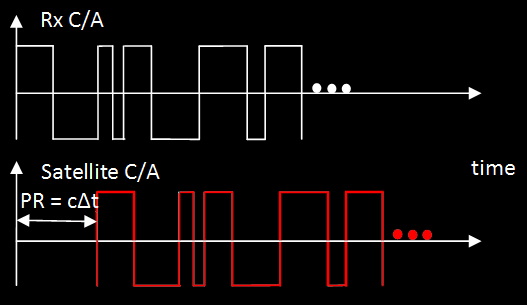
OFDMA with AM BPSK: Each satellite has its own dedicated frequency (f1 – f15). The C/A code is amplitude modulated up to that frequency using a mixer and LO at the dedicated frequency. Each satellite signal is the same exact C/A code using binary phase shift keying (BPSK). At any given time, the C/A signal coming out of every satellite should be exactly the same.
The microprocessor (μP) in the MPS receiver performs an inverse fast Fourier transform (FFT-1) on the incoming signal received from all satellites in view. The microprocessor determines which satellites are in range based on the frequencies it detects, and changes the frequency of the VCO to demodulate each in-range satellite's C/A code. The microprocessor then determines all in-range satellites' pseudoranges and performs range calculations to determine the location, which is the final output.
The receiver antenna's 3 dB bandwidth falls between 1.7 GHz and 1.9 GHz. Each satellite’s dedicated frequency is 1.7 GHz + i*0.2 GHz/(N+1) where N is the number of satellites. With 15 satellites, the frequencies are listed in the table.
| Satellite # | Frequency |
1 |
1.7125 GHz |
2 |
1.7250 GHz |
3 |
1.7375 GHz |
4 |
1.7500 GHz |
5 |
1.7625 GHz |
6 |
1.7750 GHz |
7 |
1.7875 GHz |
8 |
1.8000 GHz |
9 |
1.8125 GHz |
10 |
1.8250 GHz |
11 |
1.8375 GHz |
12 |
1.8500 GHz |
13 |
1.8625 GHz |
14 |
1.8750 GHz |
15 |
1.9000 GHz |
This frequency spacing is 12.5 MHz between satellite frequency carriers. The C/A code will have a 100 kHz bandwidth, which will correspond to the 3rd null in the C/A code spectrum as in the figure. The corresponding C/A code bit rate is 16.7 kbits/s.
In the receiver, the noise power after frequency-selective filtering assuming an antenna noise temperature of TA = 200 K and a bandwidth of 100 kHz is N = kTAB = 0.276 fW (-126 dBm). The received signal power is -116 dBm, so the S/N ratio is 10 dB. This makes the BER = 2·10-6.
The satellite transmitter antenna will be a dish with +15 dB gain, and a HPBW of ~30° aimed at Mars. A link budget is used to determine the EIRP (PT + GT) of the satellite transmitter. Assuming the distance from satellite to receiver is 9449 km, at frequency of 1.8 GHz, and receiver antenna gain of 1 dB, the satellite EIRP is 60.1 dBm. The antenna has +15 dB gain, which makes the transmit power of the satellite 45.1 dBm.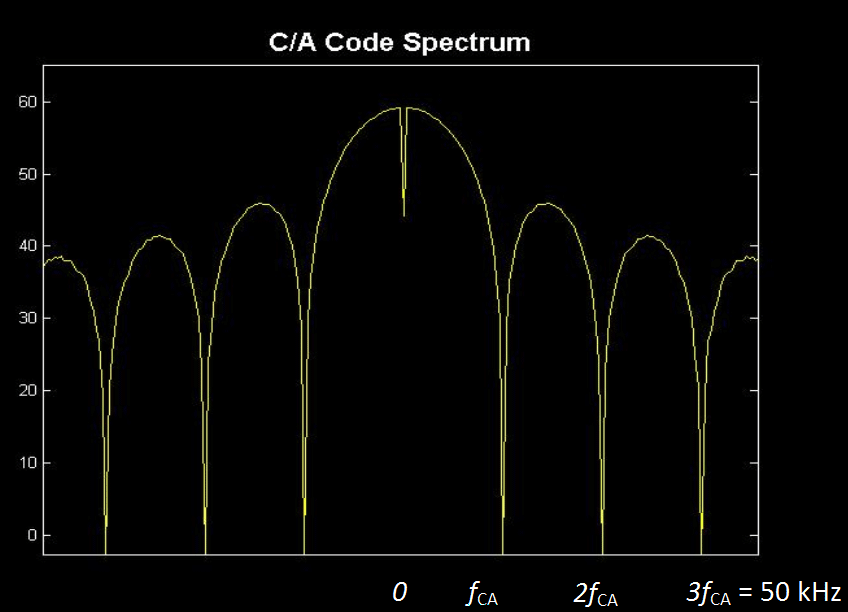
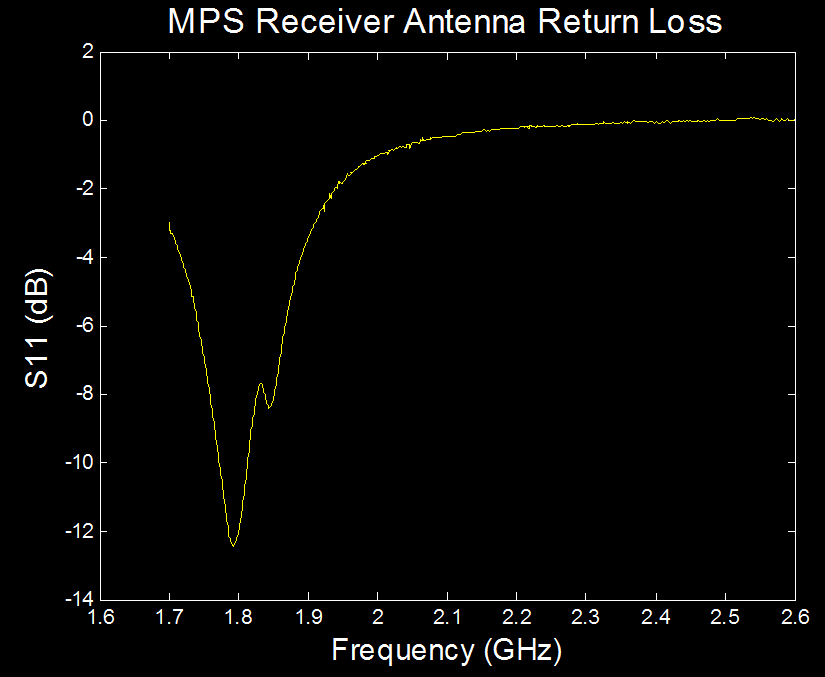
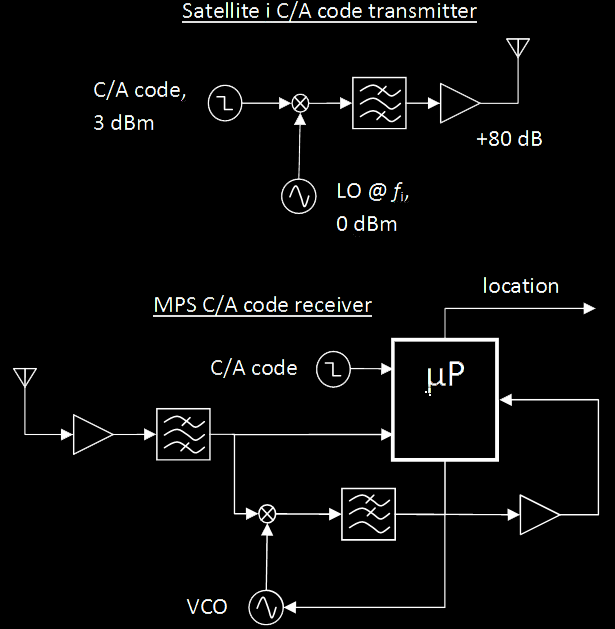
Satellite to Satellite
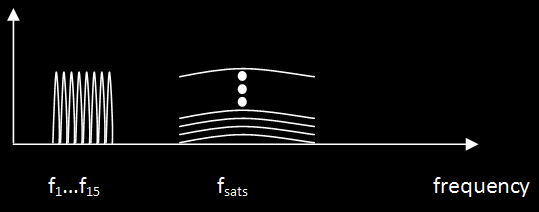
CDMA with AM BPSK: Each satellite has its own PN code, and each satellite knows all other satellites' PN codes. Each satellite should be able to communicate with its nearest neighbor satellites. If a message has to be sent to a satellite on the other side of Mars, the satellites can relay the message across.
The data rate is 500 kbits/s, and the bandwidth will end after the 3rd null in the data spectrum just like in the C/A code spectrum. The bandwidth of this signal is 3 MHz. Assuming an antenna noise temperature of 200 K, the noise power received is N = kTB = 8.28 fW (-111 dBm). The designed S/N ratio is 10 dB, and the PN codes will all have a coding gain of +30 dB. So, the required receive power at the satellite is -131 dBm. A link budget with satellite antenna gain of 1 dB, a maximum distance between satellites of 17000 km, and frequency of 2 GHz, the transmit power must be at least 50.1 dBm.
The antenna is a basic dipole aimed at the other satellites.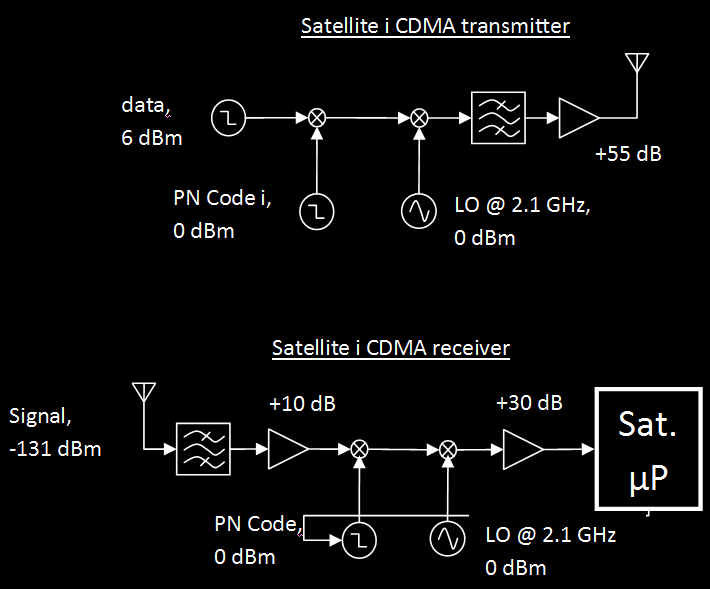
Satellite to Earth
The antenna is a steerable dish with very narrow HPBW (<5°), gain of +25 dB, and noise temperature of 150 K.
Satellite Received Signal
The data rate is 1 Mbit/s, which corresponds to a bandwidth of 6 MHz. The satellite dish antenna has noise temperature of 150 K, which makes the noise temperature N = kTB = 12.42 fW (-109 dBm). For a S/N ratio of 10 dB with PN coding gain of +30 dB, the received power from Earth is -129 dBm. The Earth then needs to transmit 56.3 dBm.
Earth Received Signal
The data rate is 1 Mbit/s, which corresponds to a bandwidth of 6 MHz. The earth dish antenna will have a very low noise temperature of 75 K, and the noise power received is N = kTB = 8.28 fW (-111 dBm). For a S/N ratio of 10 dB with PN coding gain of +30 dB, the received power is -131 dBm. The MPS satellites will only communicate with Earth when the distance between Earth and Mars is less than 65 million km. A link budget equation determines the satellite transmitted power needs to be 54.3 dBm.
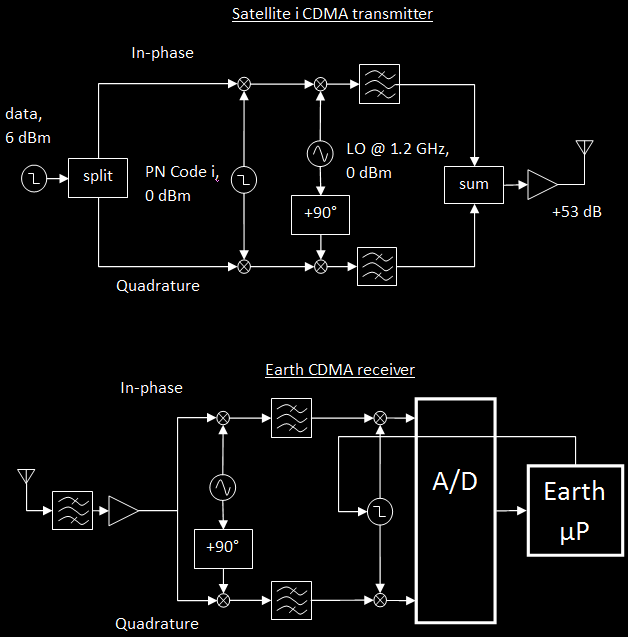
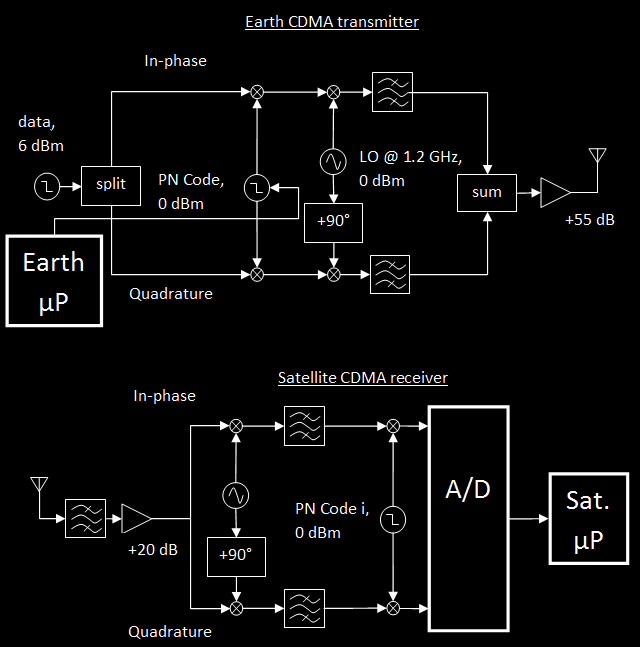
Total Communication Power Needed
Transmission:
Transmit power needed from satellite for C/A code: 45.1 dBm (32.4 W)
Transmit power needed from satellite for satellite to satellite communications: 50.1 dBm (102.3 W)
Transmit power needed from satellite for Earth communications: 54.3 dBm (269.2 W)
Reception:
The receive power needed to amplify the low power received signals from other satellites or from Earth is negligible. It is on the order of mW.
Total Power ≈ 404 W